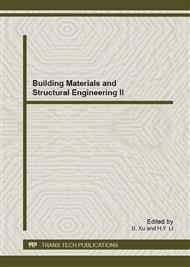p.58
p.63
p.67
p.73
p.78
p.82
p.86
p.90
p.94
Impact of the Chemical Injection Method on the Dispersion of the Injected Agents in History Masonry of Construction Industry
Abstract:
Chemical injection of masonry is a very extensively-used method for providing supplemental water-proofing of historic masonry. Like all branches of the construction industry, chemical injection of masonry is under big pressure to achieve greater performance and speed together with maximum efficiency. Current norms and standards permit both pressure injection and non-pressure injection. Are these methods comparable in efficiency, or should we expect differing effects A pilot experiment on model masonry pillars has been carried out at the Klokner Institute. This paper summarises the results and findings of our experiments.
Info:
Periodical:
Pages:
78-81
Citation:
Online since:
August 2013
Authors:
Price:
Сopyright:
© 2013 Trans Tech Publications Ltd. All Rights Reserved
Share:
Citation:


